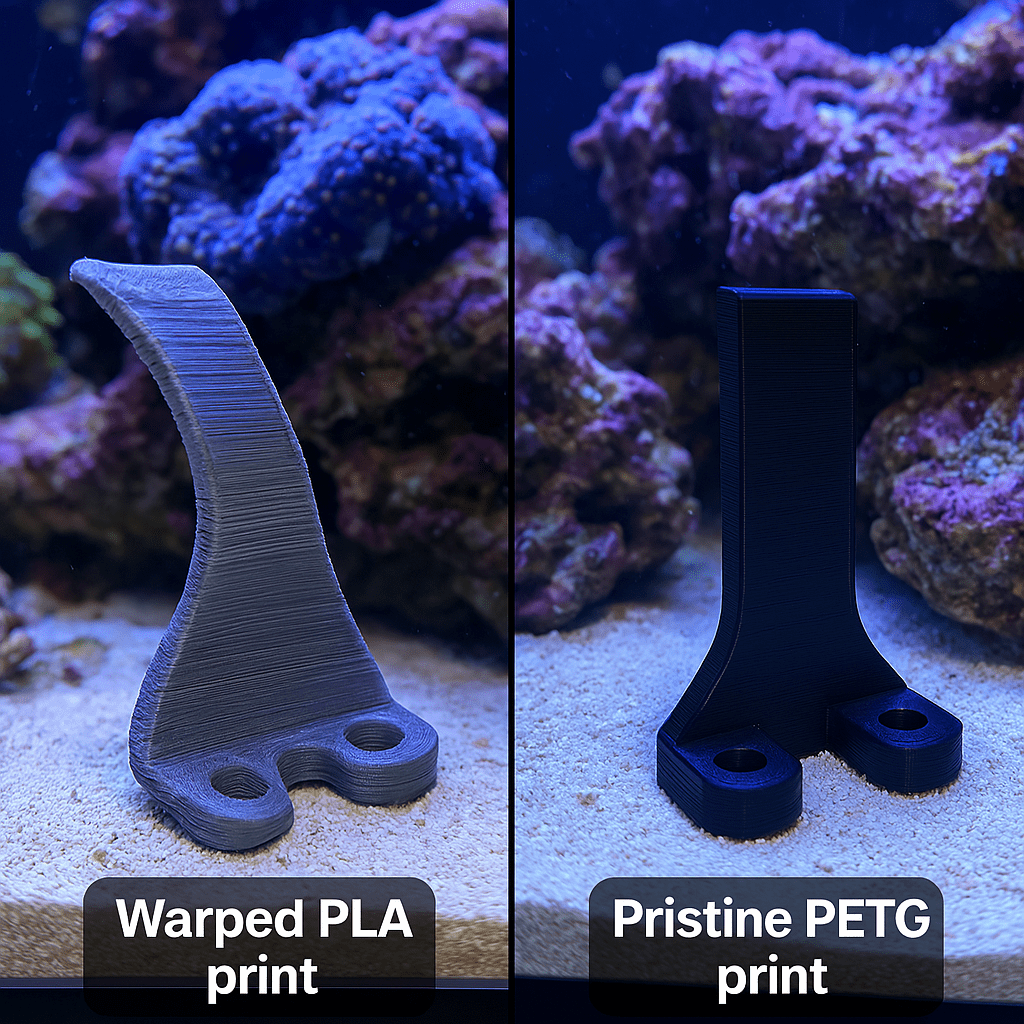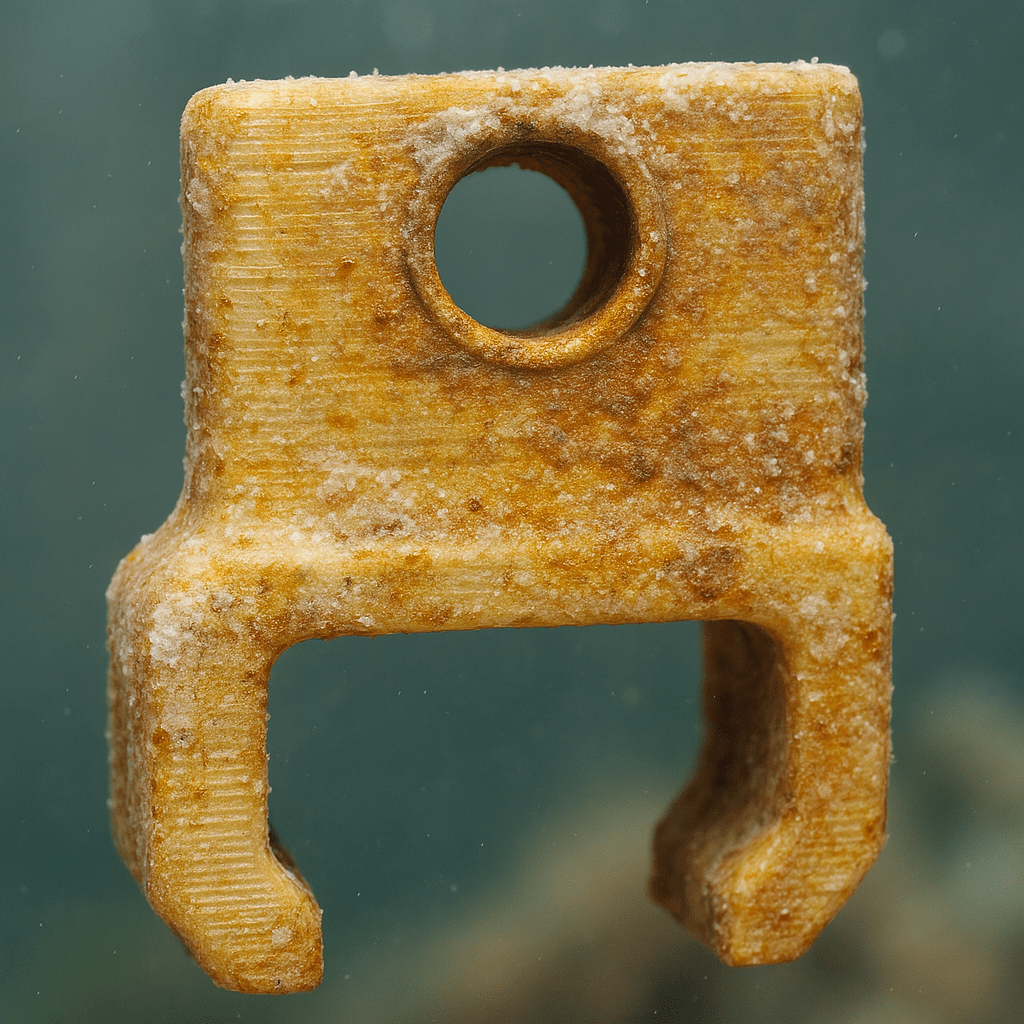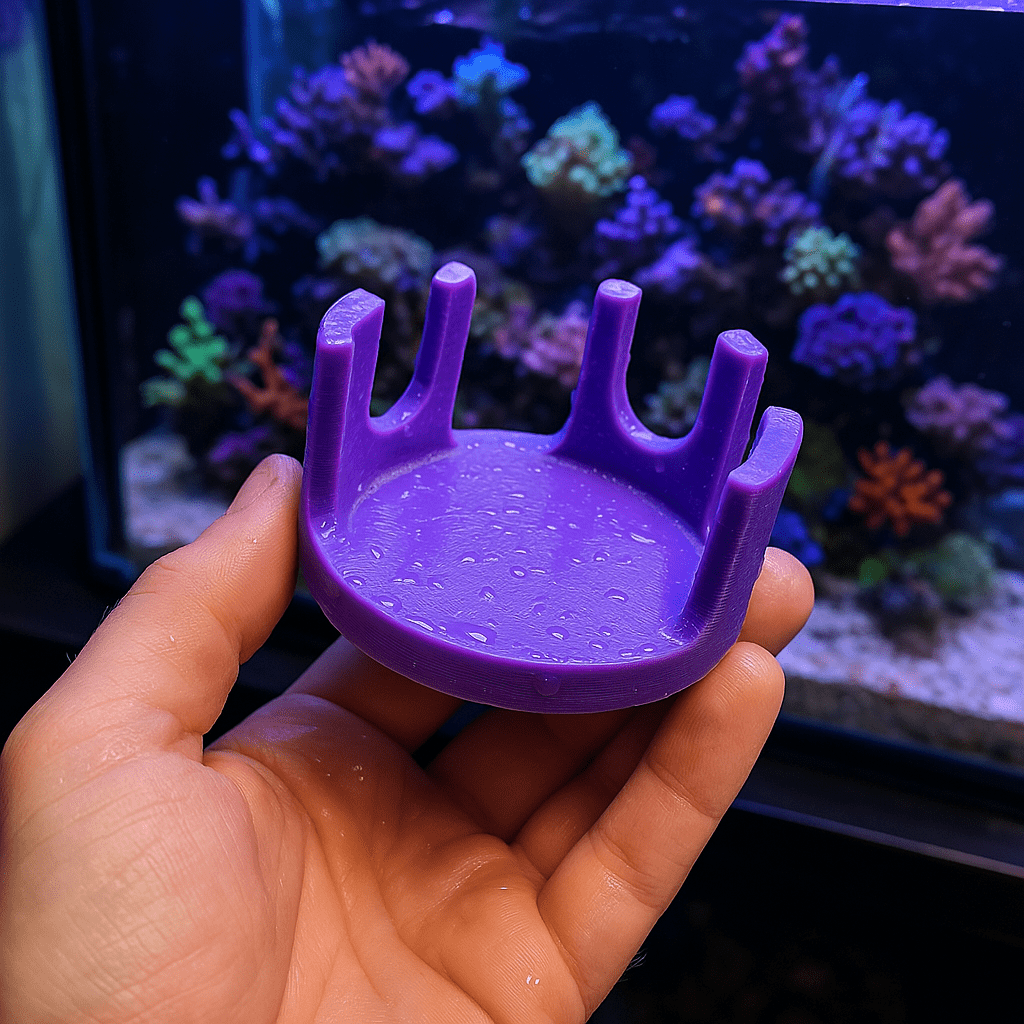If you’re eyeing your 3D printer as the ultimate tool for customizing your saltwater aquarium, hold up — not every print is reef-safe. Especially if you’re new to the game, a single mistake with the wrong filament could throw your entire tank into chaos. Before tossing any 3D print aquarium accessory into saltwater, here’s the no-nonsense guide every beginner needs so you can answer the fundamental question: Can You Really Trust That 3D Print in a Fish Tank?
🧪 Saltwater Isn’t Freshwater — It’s Far More Dangerous for 3D Prints
Not all plastic is created equal and in a saltwater setup, that difference can mean life or death for your coral, shrimp or fish.
Here’s why saltwater can turn the wrong 3d printed aquarium accessories into toxic junk:
- High salinity speeds up wear, weakens plastic structure and may react with additives.
- Corals and inverts are highly sensitive to leached chemicals — even microscopic amounts.
- Algae and biofilm grow fast and thick on porous 3D printed aquarium products.
- Reef tanks run hot and bright, warping 3D prints and accelerating degradation.
Bottom line? If a product works in freshwater, that doesn’t mean it’s safe for a saltwater aquarium 3d print.
✅ PETG: the King of Safe Saltwater Printing
When it comes to safe, reliable printing for marine tanks, PETG is the clear winner. Here’s why PETG dominates:
- Excellent chemical resistance;
- Low water absorption;
- Stays strong under heat and humidity.
I’ve run 3d print fish tank projects using PETG for over two years — frag racks, filter mounts, tool holders. No warping. No cracking. No coral deaths. Even in stores with intense lighting and wave action, PETG held up perfectly.
👉 Best practices for PETG in reef tanks:
- Use trusted PETG brands — avoid cheap filaments with unknown fillers.
- Print with 40–100% infill for durability.
- Avoid paints, coatings or glues unless labeled aquarium-safe.
Read more about PETG here.
Need a reliable, good PETG for a reasonable price? Get it here (Amazon Affiliates link).
❌ PLA in Saltwater? Just Don’t.
PLA may be popular with beginners — but it’s a terrible choice for saltwater aquariums.
Why?
- It absorbs water
- It softens under heat
- It’s biodegradable
Even “tough PLA” fails over time in a saltwater setup. It may start leaching unknown compounds — and your reef will pay the price. For 3d print aquarium builds that last, PLA is not even on the table.

⚠️ ABS and ASA: Risky Business Unless You Know What You’re Doing
ABS
While strong, ABS is not naturally water-resistant. It can leach chemicals and deform over time unless sealed. Some reefers use it in sump areas, but don’t use ABS for submerged parts unless you’re highly experienced with sealing techniques.
Personally I’m against sealing / coating 3D printed aquarium accessories, and this topic explains – why: 3D Printing Materials: Safe and Unsafe Choices for Aquariums and Terrariums.

ASA
ASA has better UV and weather resistance, but that doesn’t make it reef-safe by default. Most brands don’t provide lab data on marine safety. Without tested, verifiable data, ASA is a gamble.
🧠 Tip: Contact filament manufacturers directly and ask for chemical compatibility with marine life.
🐠 Safety First: Printing Tips for Reef-Friendly Success
Even with PETG, don’t skip safety steps:
- 🔪 Remove sharp edges to avoid injuries to your fish and other aquatic life.
- 🔒 Avoid hollow designs — trapped debris can become a nutrient bomb.
- 💧 Rinse with RODI water before placing in your tank.
- 🧪 Pre-soak test parts in a spare saltwater container if unsure.
- 🖐️ Never use regular paint or glue — only reef-safe options like cyanoacrylate gel.

🔧 Quick Checklist for Safe Saltwater 3D Printing
✅ Use only PETG for submerged 3D printed aquarium products;
✅ Print at 40–100% infill;
✅ Avoid coatings, paints and glues unless 100% reef-safe;
✅ Rinse with RODI or clean saltwater before adding;
✅ Skip hollow prints — solid or properly sealed designs only;
✅ Contact filament brands to confirm marine safety.
Conclusion: Print Smart & Reef Safe
Yes — you can use 3d print aquarium accessories in saltwater tanks. But only if you follow the rules.
- ❌ Skip PLA completely;
- ✅ Trust PETG — safe, reliable and tested in real marine tanks;
- ⚠️ Use ABS or ASA only if chemically verified and sealed.

When done right, 3d printed aquarium accessories offer powerful custom options that save money, fit your tank perfectly and keep your reef thriving.
💬 What’s Your Reef Printing Strategy?
Now that you know the do’s and dont’s of saltwater-safe 3D prints — what would YOU trust to leave in your reef tank for months at a time? Have you tried 3D printing your own accessories, or are you still on the fence?
👇 Drop your thoughts in the comments and tell us:
Would you risk PLA for a quick fix — or is it PETG or nothing?
While you’re here, don’t stop exploring — discover tutorials, material guides and inspiration for turning your next idea into a Aquarium or Terrarium masterpiece.
- Is 3D Printing Food Safe? Here’s the Real Truth
- 3D Printed Reptile Hides Exposed: Crucial for Welfare or Just Terrarium Decor Hype?
- 3D Print Bed Adhesion — What Works Best To Avoid Failed 3D Print?
- Are Aquarium Caves Really Critical for Fish and Shrimp Health? Does 3D Print Decor make a Difference for your Aquatic Pets?
- Why Aquarium Plant Holders Are Changing the Game for Tree Lovers
